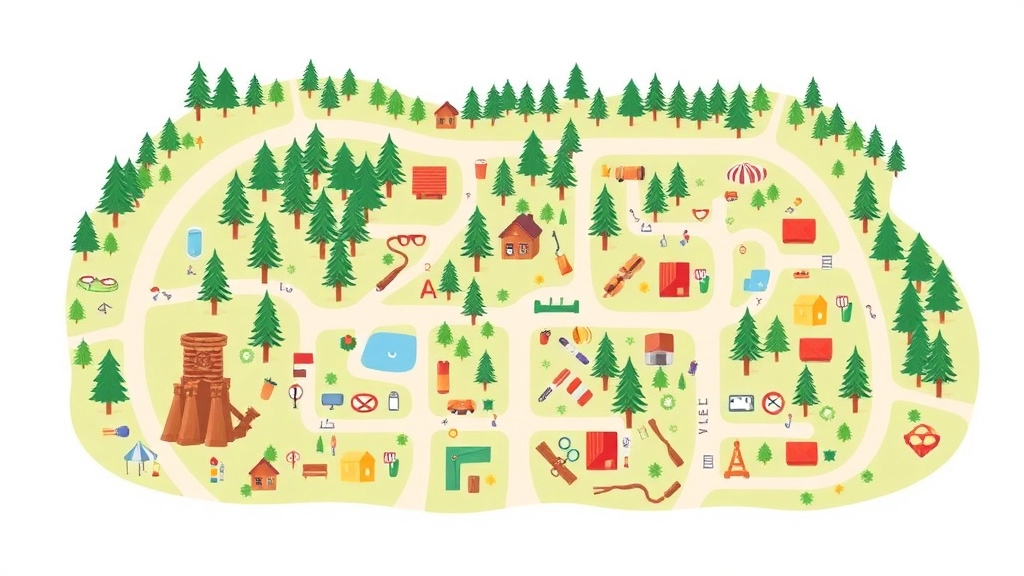Planning a Summer Camp Layout
Planning a summer camp layout can feel like a daunting task, but with the right strategies, it can become a rewarding experience. This article dives into the essential elements that make a summer camp layout successful, from designing engaging activity zones to ensuring safety and accessibility. We’ll also explore how to incorporate nature, manage traffic flow, and creatively use indoor spaces, all while keeping your budget in check.
Whether you’re setting up accommodation and dining areas or integrating technology into your camp, this guide provides practical tips and real-life examples to help you create a memorable and efficient camp layout. With a focus on customizing layouts for different age groups and employing budget-friendly design strategies, you’ll be well-equipped to design a summer camp that is both fun and functional. Let’s get started with the key elements that will make your camp a hit!
Key Elements of a Successful Summer Camp Layout
Ever wondered what makes a summer camp layout truly successful? I get it, planning a camp can feel like juggling flaming torches while riding a unicycle. But fear not, because I’m here to break it down in a way that’s easy to digest. Let’s dive into the essentials that make a camp layout not just functional but downright awesome.
Start with the Basics
Every successful camp layout needs to nail a few key components. Think about it like building a houseâif the foundation’s shaky, everything else crumbles. Here’s what you need:
- Clear Zones: Define spaces for activities, dining, sleeping, and more. This helps keep chaos at bay.
- Flow and Navigation: Make it easy for everyone to get around. Nobody wants to feel like they’re in a maze.
- Safety First: Ensure every area is safe and accessible. You don’t want any accidents on your watch.
Why These Elements Matter
Picture this: you’re at a camp where everything’s scattered, and you’re constantly lost. Frustrating, right? That’s why these elements are crucial. They provide structure and make life easier for everyone involved.
Real Questions Camp Organisers Face
- How do I keep kids engaged without them getting bored?
- What’s the best way to organise dining and sleeping areas?
- How can I ensure the camp is safe and accessible for all?
Breaking It Down
Let’s chop up these elements so they’re easy to digest:
- Activity Zones: Create dedicated areas for different activities. This keeps things organised and helps kids know where to go.
- Accommodation Layout: Plan sleeping areas to maximise comfort and privacy. No one wants to feel cramped.
- Dining Design: Ensure there’s enough space for everyone to eat comfortably. Think about flow and how food will be served.
A Story to Illustrate
Imagine a camp where the dining hall was right next to the archery range. Sounds like a recipe for chaos, right? By simply rearranging the zones, the camp transformed into a well-oiled machine. Kids knew where to go, and everything ran smoothly.
Designing Activity Zones for Engagement
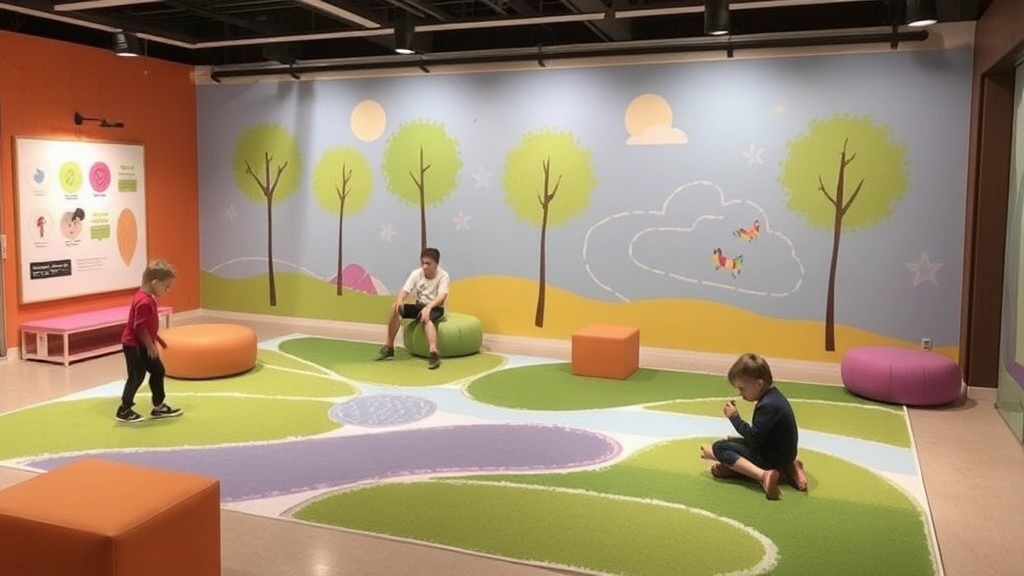
So, you’re setting up a summer camp, and you want the kids to be buzzing with excitement, right?
How do you make sure the activity zones are a hit?
Let’s break it down.
Why Activity Zones Matter
Ever been to a camp where kids are just wandering aimlessly?
Not fun.
Activity zones are the heartbeat of your camp.
They keep the energy up and boredom down.
Key Elements of Engaging Activity Zones
- Variety is King
- Sports: Football, basketball, swimming.
- Arts and Crafts: Painting, DIY projects, pottery.
- Adventure: Zip-lining, rock climbing, obstacle courses.
- Chill Zones: Reading corners, board games, nature walks.
- Age-Appropriate Activities
- Younger kids need simpler, more supervised activities.
- Teens crave challenges and independence.
- Flexibility
- Weather can be a party pooper.
- Have indoor alternatives ready.
Real Talk: What Do Kids Actually Want?
Remember your own camp days?
Kids want:
- Fun.
- Friends.
- Freedom.
Pro Tips for Designing Activity Zones
- Rotate Activities: Keeps things fresh and exciting.
- Ask for Feedback: What do the kids love? What’s a snooze fest?
- Mix It Up: Combine physical and creative activities.
Stories from the Ground
I once set up a camp with a killer zip-line.
Kids adored it.
But guess what?
The quiet corner with books and puzzles was just as popular.
Balance is key.
Designing activity zones isn’t rocket science.
It’s about knowing your audience and keeping things dynamic.
So, get out there and create zones that make kids say, “This is the best camp ever!”
Remember, the keyword here is engagement.
Make every zone a magnet for fun and learning.
Got any cool ideas for activity zones?
Share them with us!
Let’s make this summer unforgettable.
For more tips on summer camp planning, check out our sections on Safety and Accessibility Considerations and Incorporating Nature and Outdoor Spaces.
Accommodation and Dining Area Planning
Alright, let’s dive into the nitty-gritty of planning the accommodation and dining areas for your summer camp. This is where the magic happensâwhere campers rest, refuel, and create lifelong memories. So, how do you make it work like a charm? Let’s break it down.
Key Concerns: Comfort and Convenience
First things first, let’s address the questions and worries you might have:
- How do I make sure everyone is comfortable?
- How can I keep the dining area organised and efficient?
- What about safety and accessibility?
Accommodation Planning
When it comes to accommodation, think about it like you’re setting up a home away from home. Here’s what you need to consider:
Types of Accommodation:
- Cabins: Great for a rustic feel and can house multiple campers.
- Tents: Perfect for a more adventurous vibe but ensure they’re weatherproof.
- Dormitories: Ideal for larger groups and easier to manage.
Comfort Features:
- Bedding: Invest in good-quality mattresses and pillows.
- Climate Control: Fans for the summer, heaters for those chilly nights.
- Storage: Lockers or cubbies for personal belongings.
Layout:
- Proximity: Keep accommodation close to activity zones but far enough to ensure peace and quiet.
- Grouping: Arrange by age or activity group to foster camaraderie.
Dining Area Planning
Now, let’s talk food. A well-planned dining area can make or break the camp experience. Here’s how to nail it:
Dining Hall or Outdoor Seating:
- Indoor Hall: Essential for bad weather days.
- Picnic Tables: Great for an outdoor dining experience.
Flow and Efficiency:
- Serving Stations: Multiple stations to avoid long queues.
- Clear Signage: Indicate where to find utensils, condiments, and waste bins.
- Traffic Flow: Ensure there’s a logical flow from serving area to seating to waste disposal.
Menu Planning:
- Variety: Cater to different dietary needsâvegetarian, vegan, gluten-free.
- Nutritious Options: Balanced meals to keep energy levels high.
- Fun Treats: Ice cream socials, BBQ nightsâkeep it exciting.
Safety and Accessibility
Safety and accessibility are non-negotiable. Here’s how you can ensure both:
- Emergency Exits: Clearly marked and easily accessible.
- First Aid Stations: Located near both accommodation and dining areas.
- Accessibility: Ramps and wide doorways for wheelchair access.
- Hygiene: Hand sanitising stations and regular cleaning schedules.
Real-Life Example: Camp Awesome
Let me share a quick story. At Camp Awesome, they had a unique setup where the dining hall doubled as a game room after meals. This multifunctional space kept the campers engaged and made the most out of the available space. They also had themed dinner nights, like “Mexican Fiesta” and “Italian Pasta Party,” which were a huge hit. It’s all about making the experience memorable.
Safety and Accessibility Considerations
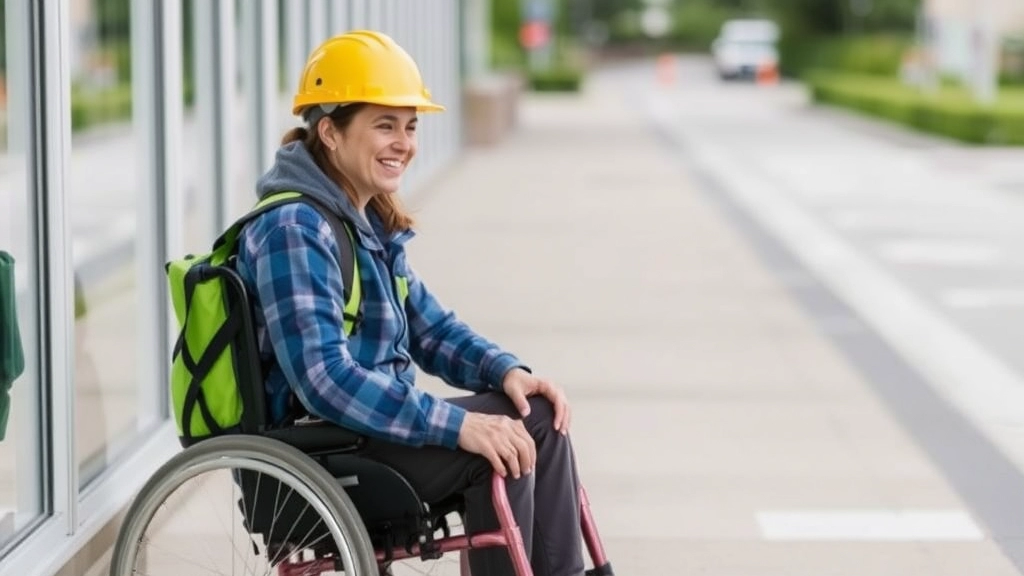
Ever worried about the safety and accessibility of a summer camp? You’re not alone.
Let’s break it down.
Why Safety and Accessibility Matter
Safety is number one. No parent wants to send their kid to a camp that’s anything less than secure.
Accessibility? Equally crucial. Everyone should join in the fun, regardless of physical limitations.
Key Safety Measures
Here are some must-haves:
- First Aid Stations: Easily visible and accessible.
- Emergency Exits: Clearly marked and unobstructed.
- Trained Staff: Everyone should know basic first aid and emergency protocols.
- Secure Boundaries: Fencing around the camp to keep unwanted visitors out and kids in.
Accessibility Essentials
Don’t overlook these:
- Ramps and Rails: For buildings and areas with steps.
- Wide Pathways: Enough room for wheelchairs and mobility aids.
- Accessible Bathrooms: Equipped with grab bars and enough space.
- Signage: Clear, large print, and maybe even Braille.
Real-World Example
I remember a camp where a kid with a wheelchair couldn’t join the main activities because the paths were too narrow.
We fixed that by widening the paths and adding ramps. Problem solved.
Traffic Flow and Navigation
Safety isn’t just about emergencies. It’s also about daily movement.
- One-Way Paths: Reduce collisions and confusion.
- Signage: Clear directions to all major areas.
- Lighting: Well-lit paths for evening activities.
Technology for Safety
Yes, tech can help too.
- GPS Trackers: For kids, especially during hikes.
- Safety Apps: Instant alerts to parents and staff.
- Surveillance Cameras: For monitoring common areas.
Incorporating Nature and Outdoor Spaces
Alright, let’s get real. When it comes to summer camps, one of the biggest draws is the great outdoors. Kids and parents alike are looking for that perfect mix of adventure and relaxation in nature. But how do you nail it? How do you make sure your camp layout maximises the natural surroundings without turning it into a logistical nightmare?
Why Nature and Outdoor Spaces Matter
First off, why even bother with nature? Well, think about it. Kids today are glued to screens. Getting them outside is a win for both their physical and mental health. Plus, parents love the idea of their children experiencing the great outdoors. So, incorporating nature into your camp layout isn’t just a nice-to-have; it’s a must-have.
Key Elements to Include
To make the most of your natural surroundings, you’ll want to include:
- Nature Trails: Easy to navigate and safe, these trails can be used for hiking, nature walks, and even educational sessions about local flora and fauna.
- Water Features: If you have a lake, river, or pond, use it! Swimming, kayaking, or fishing can be big hits.
- Open Fields: Perfect for sports, picnics, and large group activities. Think football, frisbee, or even a simple game of tag.
- Wooded Areas: Great for adventure courses, scavenger hunts, and teaching survival skills.
Real Concerns and Solutions
Worry #1: Safety
Parents worry about safety, and rightly so. How do you ensure kids are safe while exploring nature?
- Supervised Activities: Always have trained staff supervising activities.
- Clear Boundaries: Use markers or signs to indicate where kids can and can’t go.
- Emergency Plans: Have clear, easy-to-follow emergency procedures.
Worry #2: Accessibility
Not every kid is a budding Bear Grylls. How do you make sure everyone can enjoy the outdoors?
- Accessible Paths: Make sure trails and activity areas are accessible for kids of all abilities.
- Rest Areas: Include benches and shaded spots for breaks.
- Inclusive Activities: Offer a range of activities that cater to different interests and abilities.
Making It Engaging
Don’t just plonk a few benches and call it a day. Make these outdoor spaces engaging:
- Interactive Stations: Set up spots where kids can learn about nature, like bird-watching stations or plant identification posts.
- Themed Zones: Create zones with different themes, like a ‘Survival Skills’ area or a ‘Nature Art’ corner.
- Storytelling Spots: Designate areas for campfire stories or outdoor theatre.
Examples and Stories
Picture this: Last summer, we set up a ‘Nature Detective’ trail where kids had to find clues about local wildlife. Not only did they learn a ton, but they also had a blast running around and solving puzzles. Parents raved about it, and it became one of our most popular activities.
Or how about the time we introduced a ‘Water Olympics’ day? We used the camp’s lake for swimming races, kayaking challenges, and even a water balloon fight. It was a hit, and we saw kids who were usually shy come out of their shells.
For more tips on creating engaging camp activities, check out our Summer Camp Activity Ideas for Endless Fun. Additionally, discover how to keep your campers cool during those hot summer days with our Top Tips to Keep Your Camper Cool in Summer.
Efficient Traffic Flow and Navigation
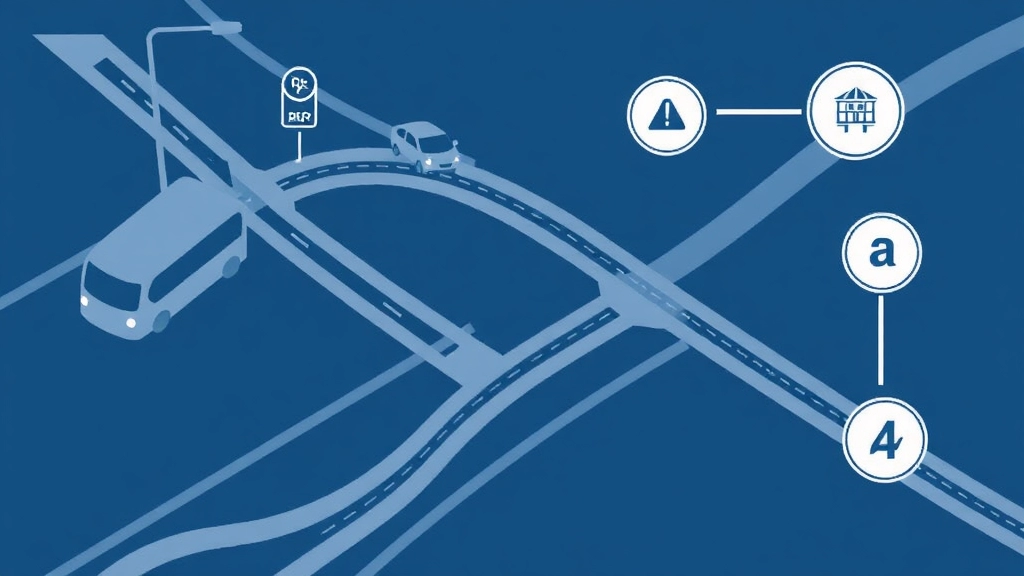
Ever been to a summer camp where you felt like you were running a marathon just to get from one place to another?
Yeah, that’s a nightmare.
So, how do we nail down efficient traffic flow and navigation?
Let’s dive in.
Why Traffic Flow Matters
First off, nobody wants to spend their time getting lost.
Parents worry about their kids wandering off, and kids just want to get to the fun stuff.
Efficient traffic flow keeps everyone happy and safe.
Key Tips for Smooth Navigation
Let’s break it down:
- Clear Signage: Use big, bold signs. Make them colourful and easy to read.
- Paths and Walkways: Keep them wide and well-maintained. Gravel or paved paths are great.
- Central Hubs: Have key areas like the dining hall or main activity zones at the centre. Everything should branch out from there.
- Zones: Group similar activities together. Think sports zone, arts and crafts zone, etc.
- Maps: Hand out maps when campers arrive. Make them simple and fun.
Real Example: The Camp Maze
I once went to a camp where the dining hall was on one side, and the cabins were on the other.
No signs, no paths.
Just a bunch of confused kids and stressed-out staff.
Don’t be that camp.
Integrating Technology
Got a bit of budget?
- Camp Apps: Develop a simple app with maps and schedules.
- QR Codes: Place them around the camp for instant info.
- Digital Signage: Update activities and announcements in real-time.
Accessibility is Key
Don’t forget about:
- Wheelchair-Friendly Paths: Make sure all paths are accessible.
- Rest Areas: Benches and shaded spots for quick breaks.
- Lighting: Ensure paths are well-lit for evening activities.
Wrapping Up
Efficient traffic flow and navigation aren’t just about convenience.
They’re about creating a safe, enjoyable experience for everyone.
So, get those paths sorted, signs up, and maps ready.
Your campers will thank you.
Related Topics
- Safety and Accessibility Considerations
- Designing Activity Zones for Engagement
- Incorporating Nature and Outdoor Spaces
Creative Use of Indoor Spaces
Struggling to make the most out of your indoor camp areas? You’re not alone. Many camp planners wrestle with transforming indoor spaces into engaging, multi-functional zones. But don’t sweat it; I’ve got some no-nonsense tips to help you out.
Why Indoor Spaces Matter
Indoor spaces in a summer camp are often overlooked, but they can be a game-changer. Think about rainy days, extreme heat, or times when kids just need a break from the outdoors. Indoor areas can be the heart of your camp if you use them creatively.
Multi-Purpose Rooms
First off, let’s talk about multi-purpose rooms. These are your Swiss Army knives of indoor spaces. They can be:
- Activity Hubs: Use them for arts and crafts, music sessions, or storytelling.
- Learning Centres: Perfect for workshops, science experiments, or even guest speakers.
- Chill Zones: Create a cosy corner with bean bags and books where kids can unwind.
Themed Rooms
Why not go a step further and create themed rooms? Kids love immersive experiences. Imagine:
- Space Room: Decorate with stars, planets, and astronauts. Use it for science activities or even quiet reading time.
- Jungle Room: Fill it with plants, animal posters, and nature sounds. Ideal for nature studies or just a fun, different environment.
Indoor Sports Areas
Don’t forget about indoor sports. You can set up:
- Mini Basketball Courts: Use portable hoops.
- Table Tennis: Easy to set up and move.
- Dance Floors: Clear some space, add a sound system, and you’re good to go.
Tech Integration
Tech can elevate your indoor spaces. Think interactive whiteboards for lessons, projectors for movie nights, or even VR setups for virtual adventures. But remember, tech should enhance, not replace, the camp experience.
Storage Solutions
Clutter can kill creativity. Keep your indoor spaces tidy with smart storage solutions:
- Wall-mounted shelves: Save floor space.
- Multi-functional furniture: Benches with storage underneath.
- Labelled bins: Make it easy for kids to find and put away materials.
Real-Life Example
I once visited a camp that turned an old barn into a multi-functional indoor space. They had different corners for different activities â one for crafts, one for reading, and even a mini-stage for performances. The kids loved it, and it became the go-to spot whenever the weather turned bad.
Making It Work on a Budget
Worried about costs? You don’t need to break the bank. Here are some budget-friendly tips:
- DIY Decor: Get the kids involved in making decorations.
- Second-Hand Finds: Thrift stores can be gold mines for furniture and decor.
- Community Donations: Don’t be shy to ask for help. Parents and local businesses might be willing to donate items.
For more detailed ideas on how to set up your camp commissary, check out our Commissary Setup Guide. And if you’re looking for fun and engaging activities, our Activities Guide has got you covered!
Technology Integration in Camp Layouts
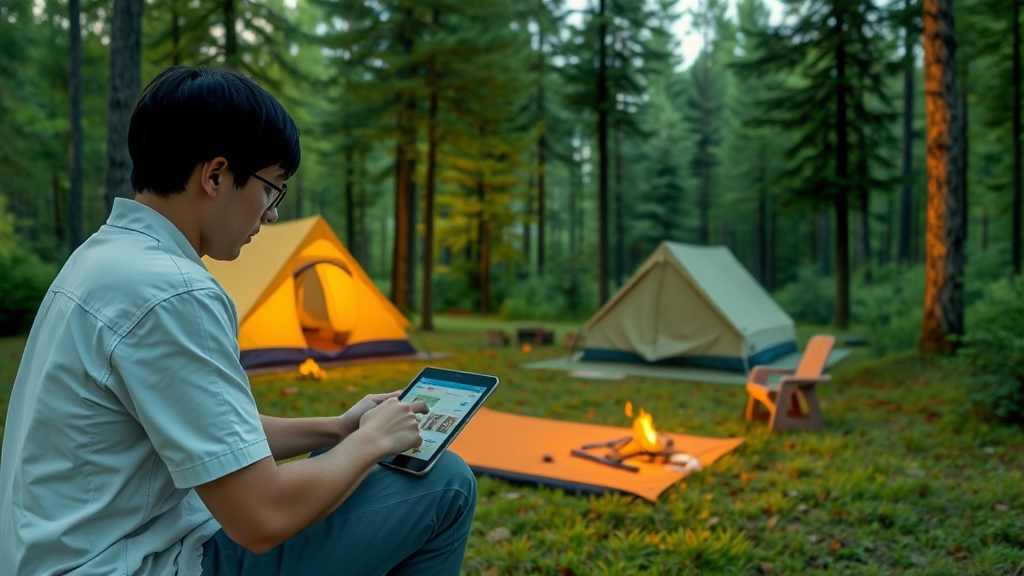
Alright, let’s talk tech. How do we integrate technology into summer camp layouts without losing that natural, unplugged vibe everyone loves? This is a real concern for many camp planners. You want to keep kids engaged, but you don’t want them glued to screens all day. So, how do we strike the right balance?
Why Technology?
First off, why even bother with tech at a summer camp?
- Enhanced Learning: Interactive learning tools can make educational activities more engaging.
- Safety: Real-time tracking and communication tools can keep everyone safe.
- Convenience: Simplifies scheduling and logistics, making the camp run smoother.
Tech Zones
Create specific zones for tech activities.
- Media Rooms: For video projects, digital storytelling, and interactive lessons.
- Charging Stations: Essential for keeping devices powered up.
- Wi-Fi Hotspots: Limited areas where Wi-Fi is available, encouraging kids to unplug elsewhere.
Interactive Tools
Use tech to make traditional camp activities even better.
- Augmented Reality (AR): Imagine a nature walk where AR brings the forest to life.
- Digital Scavenger Hunts: Use apps to create engaging, interactive scavenger hunts.
- Virtual Campfires: For those rainy days when an outdoor fire isn’t possible.
Safety First
Tech can seriously up your safety game.
- Wearable GPS Trackers: Keep tabs on where everyone is.
- Emergency Alerts: Instant notifications to all staff and campers in case of an emergency.
- Digital Check-Ins: Quick and easy way to track attendance and ensure no one’s missing.
Keep It Balanced
The key is balance.
- Tech-Free Zones: Designate areas where no tech is allowed. Encourage face-to-face interaction.
- Scheduled Screen Time: Limit screen time to specific periods, ensuring kids spend most of their day tech-free.
- Nature Integration: Use tech to enhance, not replace, outdoor activities.
Real-Life Example
I once visited a camp that nailed this balance. They had a “Tech Tent” where kids could work on digital projects for an hour a day. The rest of the time, it was all about hiking, swimming, and good old-fashioned fun. The result? Kids were more engaged and excited about both their tech projects and their outdoor adventures.
Customising Layouts for Different Age Groups
Alright, let’s dive into something crucial: customising layouts for different age groups at your summer camp. This is where the magic happens, folks. You can’t just slap together a one-size-fits-all layout and call it a day. Kids, teens, and even adults have different needs, interests, and safety requirements. So, how do we nail this? Let’s break it down.
Real Questions and Worries
- How do I keep youngsters entertained and safe?
- What activities will keep teens engaged without feeling too ‘kiddy’?
- How do I ensure adults find value and relaxation at the camp?
These are the questions you might be mulling over. And trust me, you’re not alone. Let’s tackle them head-on.
Understanding Age-Specific Needs
First off, let’s get real about what different age groups need:
- Young Kids (5-10 years): They need safety, simplicity, and loads of fun.
- Tweens and Teens (11-17 years): They crave independence, social interaction, and challenges.
- Adults (18+ years): They look for relaxation, enrichment, and sometimes a bit of adventure.
Layout Tips for Young Kids
For the little ones, safety is your top priority. But they also need areas where they can explore and let their imaginations run wild. Here’s how to do it:
- Safe Zones: Create enclosed play areas with soft surfaces.
- Visual Stimulation: Bright colours and engaging visuals.
- Simple Navigation: Easy-to-follow paths and signs.
- Activity Variety: Mix of physical activities (like mini obstacle courses) and creative stations (like arts and crafts).
Layout Tips for Tweens and Teens
Now, tweens and teens are a different ball game. They want freedom but within a structured environment. Here’s how to keep them hooked:
- Hangout Spots: Chill zones with bean bags, games, and Wi-Fi.
- Adventure Zones: High ropes, climbing walls, and zip lines.
- Social Areas: Cafés or lounges where they can socialise.
- Skill Workshops: Coding labs, music studios, or art workshops.
Layout Tips for Adults
Adults at a summer camp? Absolutely. Whether they’re parents or just looking for a retreat, here’s what they need:
- Relaxation Areas: Quiet zones with hammocks, reading nooks, and yoga spaces.
- Enrichment Zones: Workshops for cooking, painting, or even wine tasting.
- Fitness Areas: Gyms, running trails, or meditation gardens.
- Dining and Socialising: Comfortable dining areas with a variety of food options and spaces for social interaction.
Real-Life Example
Think about a family camp. The kids have their own adventure playground, the teens have a tech-free zone to hang out and play sports, and the adults have a serene lakeside retreat for yoga and reading. Everyone’s happy, everyone’s engaged.
Internal Linking Opportunities
Want to know more about designing activity zones that keep everyone engaged? Check out our section on fun activities at summer camp. And if you’re concerned about safety and accessibility, we’ve got you covered in daily schedule and safety tips.
Budget-Friendly Design Strategies
Worried about the costs of setting up a summer camp?
You’re not alone.
Creating a killer camp layout without breaking the bank is a real concern for many.
But guess what?
It’s totally doable.
Let’s dive into some budget-friendly design strategies that’ll make your camp look top-notch without emptying your wallet.
Reuse and Repurpose
First up, think about what you already have.
- Old Furniture: Can that old picnic table be spruced up with a coat of paint?
- Second-hand Gear: Check out local charity shops or online marketplaces for used sports equipment or camping gear.
DIY Projects
A little elbow grease can go a long way.
- Build Your Own Benches: Grab some wood and nails, and you’ve got yourself a seating area.
- Crafty Decorations: Get the kids involved in making signs and decorations. It’s fun and cheap!
Prioritise Essentials
Focus on what’s really important.
- Safety First: Invest in good-quality safety gear. Helmets, first aid kits â these are non-negotiables.
- Comfort: Make sure the accommodation is comfortable. No one wants to sleep on a rock-hard bed.
Multi-use Spaces
Think flexibility.
- Dining Hall by Day, Game Room by Night: Use spaces for multiple purposes.
- Convertible Areas: Have areas that can easily switch from one activity to another with minimal effort.
Nature as a Resource
Mother Nature is your best friend.
- Outdoor Classrooms: Use natural settings for learning and activities.
- Nature Trails: Create hiking trails using the natural landscape.
Volunteer Power
Leverage the power of community.
- Parent Volunteers: Ask parents to donate their time or skills.
- Local Businesses: See if local businesses can sponsor or donate materials.
Smart Shopping
Be a savvy shopper.
- Bulk Buying: Purchase supplies in bulk to save money.
- Seasonal Sales: Take advantage of off-season sales for camping gear and supplies.
Story Time
Here’s a quick story.
Last summer, we needed a new dining area but had a tight budget.
We got creative.
We used wooden pallets to build tables and benches.
Parents pitched in with paint and brushes.
By the end of the day, we had a fantastic dining area that cost next to nothing.
And the best part?
Everyone felt like they were part of something special.
For more tips on how to make your summer camp a success, check out our guide to summer camp building key elements and trends and our ultimate summer camp calendar guide.
Frequently Asked Questions about Summer Camp Layout
What are the key elements of engaging activity zones in a summer camp?
Engaging activity zones should offer a variety of activities, including sports, arts and crafts, adventure challenges, and chill zones. It’s also important to consider age-appropriate activities and maintain flexibility to accommodate weather changes.
Why is the layout of activity zones important in a summer camp?
Activity zones are crucial as they keep the energy levels high and help prevent boredom. They ensure that kids are engaged and have fun, making the camp experience memorable.
How can I ensure safety and accessibility in a summer camp layout?
Key safety measures include having first aid stations, clear emergency exits, trained staff, and secure boundaries. For accessibility, ensure ramps and rails, wide pathways, accessible bathrooms, and clear signage are in place.
What are some pro tips for designing effective activity zones?
Rotate activities to keep them fresh, ask for feedback from kids, and mix physical and creative activities. This helps maintain engagement and excitement throughout the camp.
How can technology be integrated into a summer camp layout without losing the natural vibe?
Integrate technology by creating specific tech zones like media rooms, charging stations, and Wi-Fi hotspots. Use interactive tools like augmented reality and digital scavenger hunts, and ensure a balance by designating tech-free zones and limiting screen time.
What are some essential safety technologies for a summer camp?
Wearable GPS trackers, emergency alert systems, and digital check-ins are essential technologies that can enhance safety and ensure real-time tracking and communication.
How can efficient traffic flow and navigation be achieved in a summer camp?
Use clear signage, maintain wide and well-kept paths, establish central hubs for key areas, group similar activities, and provide maps to campers. This helps in reducing confusion and ensuring smooth movement.
What are some real-world examples of successful summer camp layouts?
One example is a camp that balanced tech and outdoor activities by having a “Tech Tent” for digital projects and focusing on traditional camp activities like hiking and swimming the rest of the time. Another example is improving accessibility by widening paths and adding ramps for wheelchair users.
Why is it important to have a variety of activity zones in a summer camp?
Variety keeps the camp experience dynamic and caters to different interests and age groups, ensuring that all kids find something they enjoy and stay engaged throughout the camp.
How can feedback from kids improve the summer camp layout?
Feedback helps identify what activities are popular and which ones need improvement. This allows for better planning and adjustments to keep the camp experience exciting and enjoyable for all participants.

